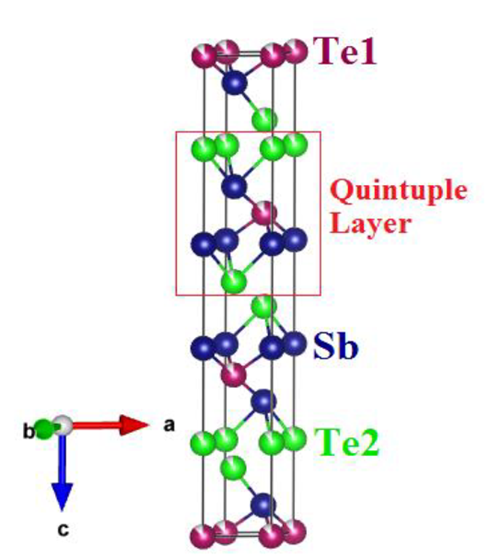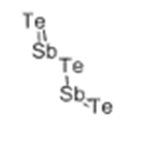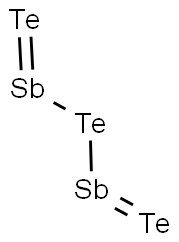What is the Crystal Structure of Antimony (III) Telluride?
Similar to Bi2Se3 and Bi2Te3, antimony (III) telluride (Sb2Te3) is a well-studied and experimentally confirmed typical 3D layered topological insulators (TIs) exhibiting a relatively large bulk energy gap and a single surface Dirac cone. In case of TIs, it is also interesting to note that a layered material exhibits rhombohedral structure with in R3 m (D5) space group[1].
Apart from being a known TI and TE, the antimony (III) telluride holds great promise as a phase changing material for information storage in chalcogenide alloys.Various synthesis techniques; such as Bridgman crystal growth, chemical vapour deposition (CVD), pulsed-laser deposition (PLD), flux free method, metal organic chemical vapour deposition (MOCVD), and molecular beam epitaxy (MBE) have been employed to grow bulk single crystals, thin films, nano-plates/nano-ribbons and nano-sheets of TI and topological superconductor (TSC) materials[1].

The figure above shows the schematic unit cell structure of as grown antimony (III) telluride single crystal produced using the VESTA software. The atomic arrangement of the resultant bulk antimony (III) telluride single crystal displays a layered rhombohedral structure consisting of quintuple layers (QLs)[1].
Here, each quintuple layer is seen to be comprised of five mono-atomic planes of Te–Sb–Te–Sb–Te. Besides, QLs are bonded by van der Waals (vdW) forces, while the five atoms in each QL are held simultaneously by covalent bond.
Reference
[1] Crystal growth and characterization of bulk Sb2Te3 topological insulator. doi:10.1088/2053-1591/aabc33
You may like
See also
Lastest Price from ANTIMONY (III) TELLURIDE manufacturers

US $0.00-0.00/KG2025-04-04
- CAS:
- 1327-50-0
- Min. Order:
- 1KG
- Purity:
- 98%
- Supply Ability:
- 1ton


